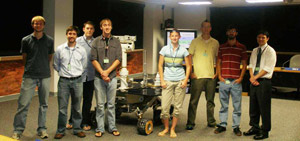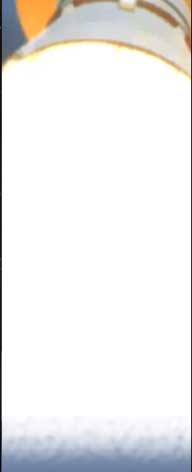|
 In the spring of 2007, NASA’s Jet Propulsion Laboratory selected a group of 2 teams to participate in a mission concept of an entirely student designed and built payload aboard the proposed Mars rover Astrobiology Field Laboratory (AFL). The Pre-Phase A study incorporated the popular harsh JPL reviews, namely Preliminary Design Review and Critical Design Review, among chief scientists and engineers. I am fortunate to have had this opportunity to experience the system through which NASA mission concepts go through and to be able to work with successful JPL scientists and engineers.
In the spring of 2007, NASA’s Jet Propulsion Laboratory selected a group of 2 teams to participate in a mission concept of an entirely student designed and built payload aboard the proposed Mars rover Astrobiology Field Laboratory (AFL). The Pre-Phase A study incorporated the popular harsh JPL reviews, namely Preliminary Design Review and Critical Design Review, among chief scientists and engineers. I am fortunate to have had this opportunity to experience the system through which NASA mission concepts go through and to be able to work with successful JPL scientists and engineers.
Early on in the summer, the majority of our time consisted of meetings with JPL scientists and engineers to gather information on the JPL approach to spacecraft subsystem design and to learn more about the process of designing a mission concept in ten-weeks (i.e. Pre-Phase generally lasts 2-3 years). Among the 2 teams mentioned, our team was given the task of studying the interior of Mars via seismology and the accompanying meteorological processes near the surface. At the beginning of the summer, our team met to define science requirements for the mission and select the respective instrument suite aboard the payload. We then designated resources for each of the spacecraft subsystems involved in the study, and my task involved the thermal design of our seismic-science payload. Working alongside a head JPL thermal engineer and collaborating with team members and their respective subsystems, the thermal design took a passive approach, utilizing available stagnant carbon dioxide on the Martian surface as its most notable design characteristic. As mentioned, the results of the design were reviewed through both PDR and CDR near the end of the summer and were given suggestions for improvement and future work. Our team hopes to continue to collaborate throughout the school year with the goal of providing a firm pathway for the next group of engineers to continue the design during the next summer.
Aside from the extremely valuable engineering experience received this past summer, perhaps the most significant experiences I obtained involved a look into the processes every successful NASA mission goes through over a period of 8-10 years, including the people involved with it. The team environment involved with and pride towards every mission that NASA exhibits is definitely something I would enjoy incorporating into my daily career.
~Ryan Swindle, Washington University in St. Louis
|







